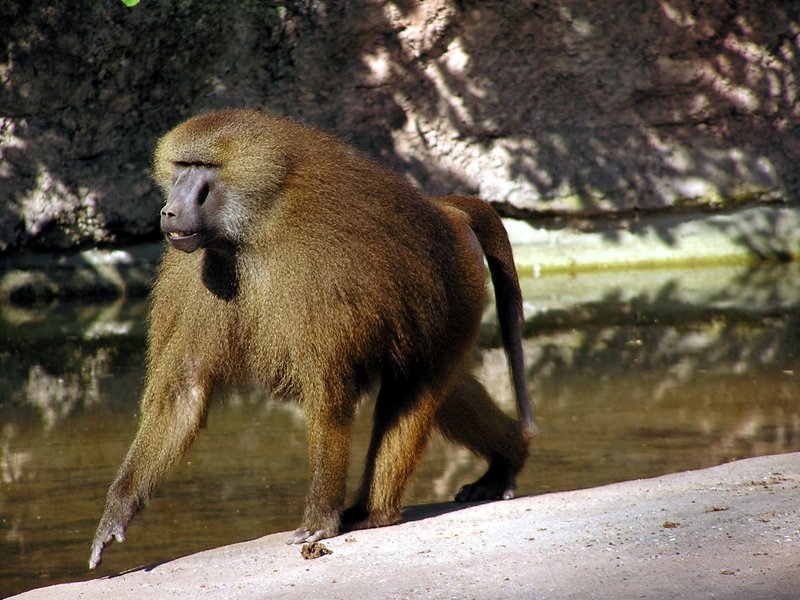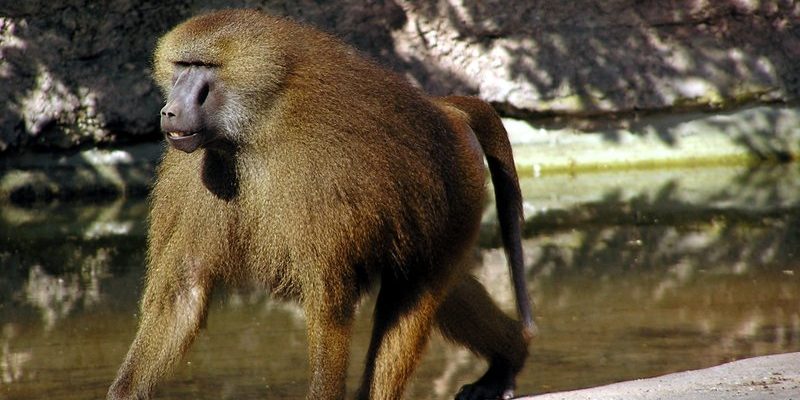
The guinea baboon, scientifically known as Papio papio, is known for its distinctive features and social nature. These monkeys are a part of the Old World monkeys and are found in the dry regions of West Africa. But what if you encounter another primate and aren’t sure if it’s a guinea baboon or something else? Honestly, it can be tricky! Fear not; we’re here to break it down in a fun and approachable way.
1. Hamadryas Baboon
First up on our list is the Hamadryas baboon. This species, native to the Arabian Peninsula and parts of Africa, is particularly striking with its long, flowing fur and unique social structure. Hamadryas baboons are known for their harems, where one male can have several females under his care. You might notice the males sporting a large, impressive mane, kind of like a lion’s but less fierce.
To tell them apart from guinea baboons, focus on the social behavior. While guinea baboons tend to have larger, more fluid groups, Hamadryas baboons are more structured and territorial. The face of the Hamadryas is also longer and more prominent, giving it a very different look compared to the guinea baboon’s rounder face.
2. Olive Baboon
Next, we have the olive baboon, a common sight in East Africa. These baboons are a bit larger and have a more olive-colored coat—hence the name! One of the telltale signs of an olive baboon is its long, slim body and a rather prominent snout.
If you spot one of these in the wild, you might be struck by their more muted colors compared to the guineas. Olive baboons also have a different social structure, often forming larger troops that can be quite boisterous. So, while both are social monkeys, the olive baboon’s troop dynamics and coloration help separate them from guinea baboons.
3. Yellow Baboon
The yellow baboon is another cousin that’s often mistaken for the guinea baboon, especially when it comes to their playful antics. These baboons are lighter in color, with a soft yellowish coat that adds a cheerful twist to their demeanor. Found in southern Africa, yellow baboons love open grasslands—so if you see one, it’s likely in a sun-soaked environment.
When comparing them, the key difference lies in their fur and size. Yellow baboons are generally larger and have a more slender appearance than guinea baboons. Their facial features are also more elongated, giving them a distinct look that is hard to miss.
4. Chacma Baboon
Moving on, let’s talk about the chacma baboon, which you can find in South Africa. Known for their strong build and robust nature, these baboons can be quite intimidating! They have a mix of gray and brown fur, giving them a rugged appearance.
In terms of behavior, chacma baboons are more aggressive and dominant, which sets them apart from the more gentle guinea baboon. Their size is another indicator; chacmas are usually larger and bulkier than their guinea counterparts, and their prominent canine teeth are a giveaway of their strength.
5. Japanese Macaque
Now, we’ll switch gears and discuss the Japanese macaque, also known as the snow monkey. These adorable primates are famous for their thick fur and red faces and rumps. They live in colder climates, often seen soaking in hot springs during winter.
You might wonder how to spot the difference. Well, while guinea baboons are found in Africa, Japanese macaques are native to Japan. Their behavior is also quite different—these macaques are often more playful and curious, adding a unique flair to their personality compared to the typically more serious demeanor of guinea baboons.
6. Rhesus Macaque
Then, there’s the rhesus macaque, widely distributed across Asia. These monkeys have a distinct brown coat and a bare face, which sets them apart from the furrier guinea baboons. The rhesus macaque is often found in urban areas, making them quite adaptable to human environments.
When you compare them to guinea baboons, the most obvious difference is in the face; rhesus macaques have a more slender, less expressive face. Additionally, their social groups are often matriarchal, which contrasts with the more male-dominated structures seen in some baboon troops.
7. Barbary Macaque
Next on our list is the Barbary macaque, the only macaque species found in Europe. They’re quite unique with their lack of a tail and have a more rounded face compared to guinea baboons. These monkeys are known for their sociable nature and are often found in groups.
In terms of physical differences, Barbary macaques are typically smaller than guinea baboons and have a softer facial expression. Their habitat range is also a key distinction; while guinea baboons prefer savannas, Barbary macaques thrive in mountainous forests.
8. Proboscis Monkey
Last but not least is the proboscis monkey, famous for its distinctive long nose. Native to the jungles of Borneo and Sumatra, it has a unique appearance that can’t be mistaken. These monkeys have a large, pot-bellied physique and a prominent community life.
When comparing them to guinea baboons, the most glaring difference is that comically long nose, which certainly grabs attention! Their diet is also different; while guinea baboons are omnivorous, proboscis monkeys primarily eat leaves and fruits.
9. Squirrel Monkey
Now let’s discuss the squirrel monkey, a small, agile primate found in Central and South America. These little guys are incredibly lively, and their vibrant fur ranges from yellow to orange. They live in large groups and are known for their playful behaviors.
While they might share social tendencies with the guinea baboon, their size and behavior are significant areas of difference. Squirrel monkeys are much smaller, which makes them look like the energetic cousins of the larger guinea baboons. Their facial features are also less pronounced, giving them a somewhat innocent appearance.
10. Capuchin Monkey
Finally, we have the capuchin monkey, known for its intelligence and often seen in movies. These monkeys are easily recognized by their creamy fur and expressive faces. They’re social creatures and are often seen interacting in playful ways.
In terms of differentiating from guinea baboons, capuchins are smaller and have a more diverse diet. They are also known to use tools, making them stand out in the primate world. Their playful antics and curious nature give them a different vibe compared to the more serious, grounded nature of guinea baboons.
In conclusion, understanding the similarities and differences among these fascinating animals can deepen your appreciation for the diversity in the primate world. Each of these creatures brings its own unique charm to the table, and learning about them can be both fun and enlightening. Whether you’re watching them in the wild or learning through documentaries, it’s great to know that getting to know them is just as exciting as spotting a guinea baboon!

